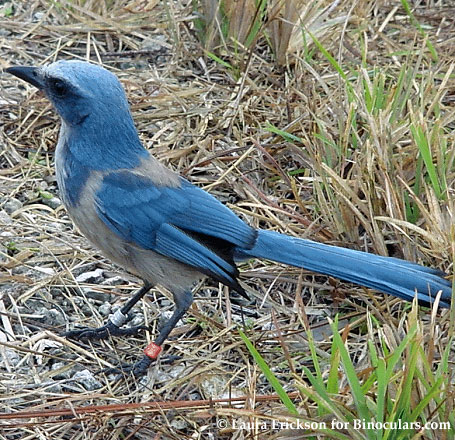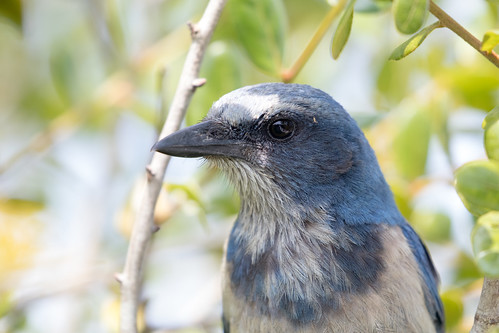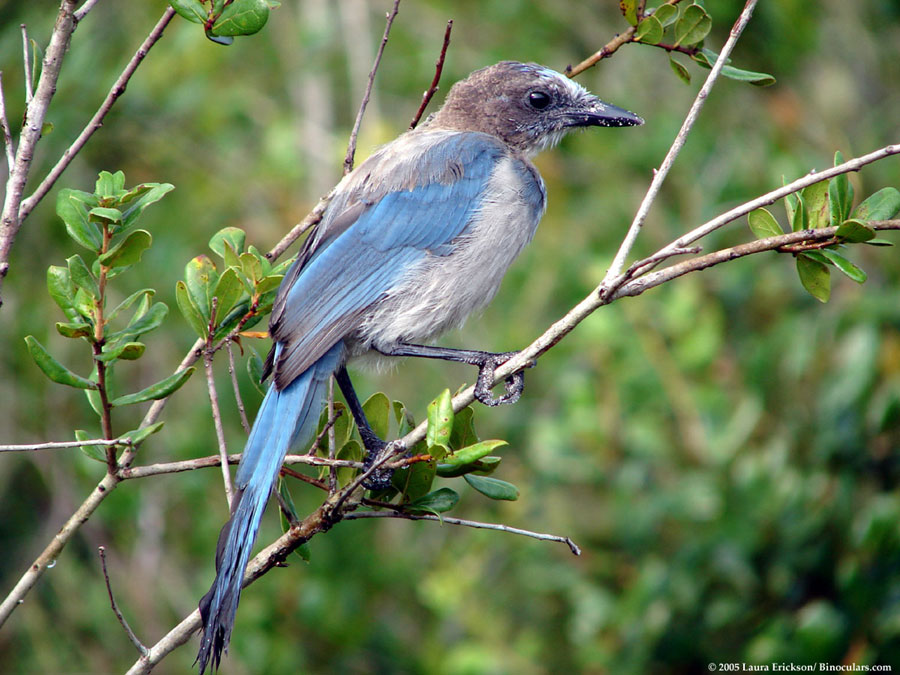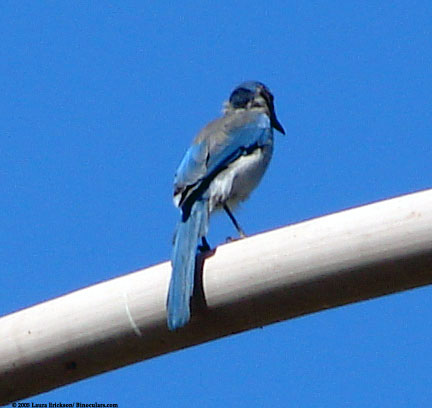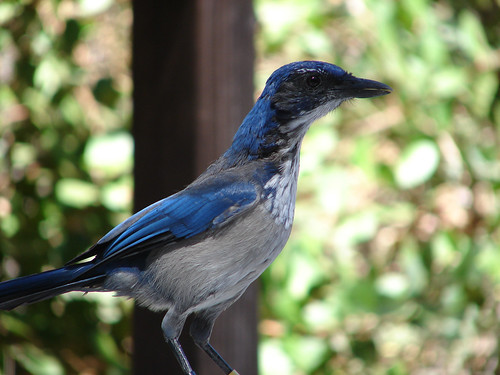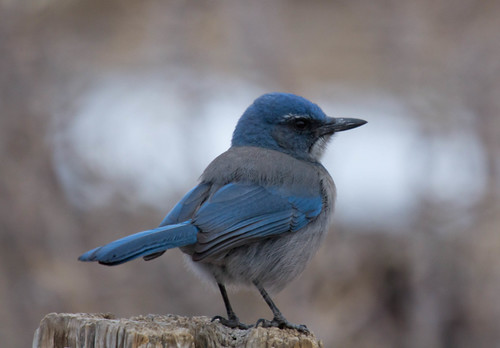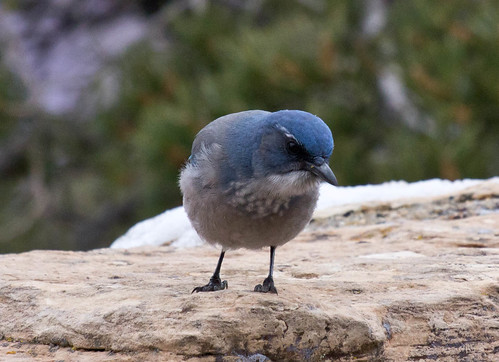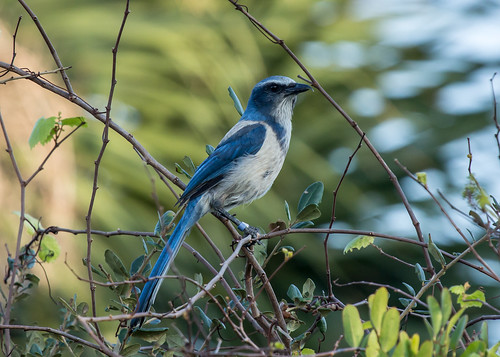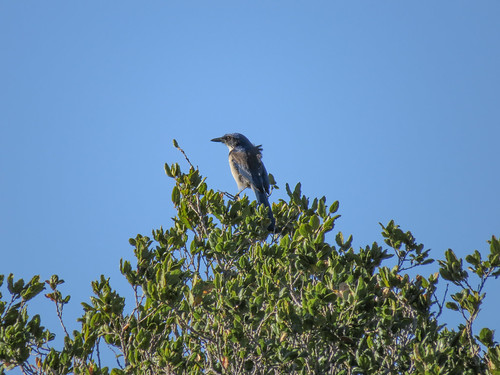When my godfather died the next year, he wanted his ashes scattered at the lake where he'd retired in Florida, so I spent a few days with my aunt there in February 2001. Every morning, she would join with some of her "lady friends" on a neighborhood walk to "feed the birds," and naturally invited me along. I was shocked to discover that the birds they were feeding were neighborhood Florida Scrub-Jays. I'd never photographed birds before that, but got some really good photos. Tragically, those photos disappeared on a bad hard drive, teaching me the hard way to back up my data—I only have one low-resolution photo from the set.
Over the years, most of the times when our family visited Florida, we've made trips to Lake Kissimmee State Park or to Merritt Island National Wildlife Refuge. When we first started going there, it was okay to bring peanuts to feed the jays, and my kids got an enormous kick out of that.
That is now prohibited. Oddly enough, a recent study showed that those Florida Scrub-Jays who take peanuts from people turn out to live longer than those who don't. Apparently nutrition has nothing to do with it; it's just that the birds who figure out how to exploit novel sources of food are apparently more adaptable. Now when I go to Florida, I still look at scrub jays, and I'm still charmed at how easy they are to photograph, even without peanuts.
In August 2005, I had what I called at the time "Scrub Jay Sweeps Month." Russ and I started the month in Florida seeing Florida Scrub-Jays at Lake Kissimmee State Park, where it used to be easy to find them right at the park entrance. Being August, they were molting, their plumage about as ratty as scrub jays can get.
Nowadays just three scrub jays wouldn’t cut it—I’d have to also head to somewhere in the West outside of coastal California to get the Woodhouse’s Scrub-Jay to see them all.
But I did get to spend time with Woodhouse's Scrub-Jays when I spent my 60th birthday, on 11/11/11, at the Grand Canyon. My goal was actually to see California Condors, but the jays made a most pleasant diversion.
Other than the 2005 AOU meeting, I’ve only made it to Santa Cruz Island one other time, during my Big Year in 2013, the only year I’ve seen all four species of scrub jays.
Scrub jays of all types and species are splendid birds. The Florida species is unique in how young males stay with their parents a year or more, helping them raise new batches of young. A long-term study of them at Archbold Biological Station is unmatched in how much researchers have been able to tease out about this fascinating bird. When researchers started doing DNA studies and learning how much "extra-pair paternity" was happening in almost every species, with mother birds mating with more than one male so a single brood of young had more than one father among them, they wanted to learn how much this happens in Florida Scrub-Jays. Because there are so many feather and blood samples of birds of known parentage over generations, it would be easy to tease out how often this occurs, except that of every individual traced, not a single one has ever been the product of any pairing except the mother and father raising it. If you want to use a bird picture on a wedding or anniversary card depicting a species that is faithful for a lifetime, the Florida Scrub-Jay is an excellent choice. Other scrub jays don't have that kind of multi-generational helpers-at-the-nest thing going on, but all of them are noted for a variety of cool behaviors. Watching them wherever I happen to find them, whichever plumage type and species they happen to belong in, makes me endlessly happy.
